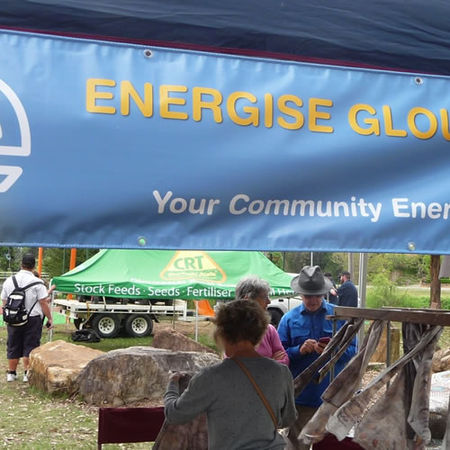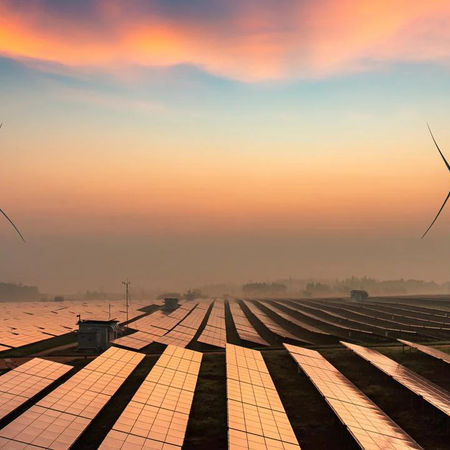
Welcome to all Members.
We certainly appreciate that you have joined and we hope that this Newsletter is the first of a regular monthly publication. It is our intention to put articles in the newsletter that provide you with current action in the alternative energy scene, technical updates in lay terms, government policy developments and news of alternative energy in Gloucester.
If you have any news or information stories that could go in the Newsletter, or questions that you would like answered, please send them to the editor@energygloucester.org and we will see what we can do. Of course, you can also post information or photos directly onto our Facebook page or send them to us via the website.
Yours with energy
David Marston (Chairperson)
Energise Gloucester Launched on 17 Nov 2016
It was fantastic to welcome over 90 people to our launch event in the Neighbourhood Center on the evening of Thursday 17 November. It was very pleasing that over 40 people signed on as members and this is why you are now getting this newsletter.
Thank you to the Bucketts Way Neighbourhood Group for the use of their facilities for the launch. This was significant as we are working with the Group to undertake our first project. We hope that this will result in a solar system being installed on the Centre’s roof. This will enable them to reduce their electricity costs via an Energise Gloucester system. There will be more about this in our next newsletter.

We were pleased to welcome our two guest speakers Tom Nockolds and Mark Squires who provided us with very valuable information on the situation with electricity charges and feed-in tariffs after 31 December 2016.
Tom Nockolds is the Marketing and Communications Director, Community Power Agency; and Mark Squires is the Senior Team Leader, Resource Efficiency, NSW Office of Environment and Heritage.
The key message of their talks was what to do after the 20 and 60 c/kWh feed-in tariffs expire on 31 December. They emphasised that it is in your financial interest to maximize the use of the electricity that you generate at the time you are generating it during the day. They provided many examples of how to do this. We will be including much of this information in future issues of the Energise Gloucester newsletters. They also spoke about how to go about deciding whether to invest in a battery system. We will also follow up this topic in future newsletters.
The information that they talked about is contained in the following websites mentioned by them.
www.cpagency.org.au/
www.energymade easy.gov.au
www.resourcesandenergy.nsw.gov.au/energy-consumers
www. solarcitizens.org.au
What is Energise Gloucester
Mission Statement
The social, financial and environmental pressures that are impacting on Gloucester, and most other NSW communities, create an opportunity for us all to work together to change our energy usage and efficiency practices. Therefore, Energise Gloucester has been initiated in order to empower the community to develop and run its own locally controlled, environmentally responsible, and financially successful renewable energy program.
Vision
A viable renewable energy program operating by 2020 that is embraced in practice and financially by the Gloucester community.
Aims
- To assist Gloucester to use energy more efficiently and reduce costs.
- To provide clean, affordable renewable energy sources for residents and businesses.
- To improve community cohesion through improved prosperity.
- To increase the diversity of enterprises using renewable energy and create job opportunities.
- To add social capital in the community
Types of meters
A GROSS meter measures the amount of electricity that you take into your house from the grid and the total (gross) amount of electricity that you generate and feed back to the grid.
A NET meter measures the amount of electricity that you take into your house from the grid and the net amount of electricity that you generate and feed back to the grid. This net amount is the difference between the total amount that you generate less the amount of this electricity that you use before it reaches the meter. With a net meter, you use electricity that you are generating before you use electricity from the grid.

NSW GOVT Changes to Electricity Feed-in Tariffs
On the 31 December 2016 the NSW Government will no longer provide a subsidy to electricity retailers and they will no longer provide the 60 cents/kilowatt hour (c/kWh) or 20 c/kWh feed-in tariffs.
The NSW Pricing Tribunal has recommended that electricity suppliers (providers) pay a feed-in tariff of 5-7 c/kWh, but some providers are offering some customers more than this rate. Some providers are
offering up to 12c/kWh with various conditions so it’s important to check what your provider is offering you.
What will happen to your electricity bill after 1 Jan
From 1 January 2017 your electricity provider will only pay you a feed-in tariff of 6-12c/kWh for any electricity that you feed into the grid. If you have a gross meter after 1 January 2017, this will be the rate paid for the total amount that you generate. So, if you were getting 60c/kWh you will now get a lot
less, and may not get a credit refund.
If you have a net meter, you will use your generated electricity before any surplus goes to the grid and this will save you purchasing this amount of electricity from the grid. You will not get paid for this generated electricity that you have used but you will get paid 6-12c/kWh for any excess that you don’t use and hence feed into the grid.
As the purchase price will be a lot greater than the feed-in price it will be cost effective for you to get a net meter as soon as possible. Some providers are installing these free of charge and others are charging you a fixed fee or an on-going usage fee. You need to check your situation by talking to your provider as soon as possible.
How the changes could affect your electricity bill:
Let's say for example on a typical day:
- You use a total of 20kWh of electricity in a day
- The billing plan that you have agreed with your provider is a purchase price of 30c/kWh and feed-in rate of 8c/kWh
- Then the cost of your grid electricity use will be 20 x 30c/kWh=$6.00 per day
Situation A: you still have a GROSS meter
If your solar system generates 10kWh in a day and you cannot use this directly because you are using an old GROSS meter you will still be charged for 20kWh at 30c/kWh= $6 per day. You will also be paid 8c/kWh for 10kWh of solar you have produced= $0.80.
Then your bill will be $6.00 - $0.80 = $5.20 for this day.
Situation B: you have a NET meter and use all your generated Solar
If your solar system generates 10kWh in a day and you use all this directly by using a NET meter you will only be charged for 10kWh at 30c/kWh = $3.00 per day. In this case you save $3.00 per day with a NET meter compared with a GROSS meter.
You will have no feed-in payment so your bill for the day will be $3.00.
Situation C: you have a NET meter and only use half of your generated Solar
If your solar system generates 10kWh in a day and you only use 5kWh of this solar directly by using a NET meter you will be charged for 15kWh from the grid at 30c/kWh= $4.50 per day. You will also bpaid for the 5kWh that you generated but did not use = 5x8c = $0.40. Therefor your bill will be $4.50 – 0.40 = $4.10 for the day.
There are three messages about reducing electricity bills from these examples:
- Get a net meter as soon as possible.
- Use as much of your electricity at the time it is generated.
- Reduce the amount of electricity that you use at times when your solar system is not generating because the sun is not shining on the panels.






